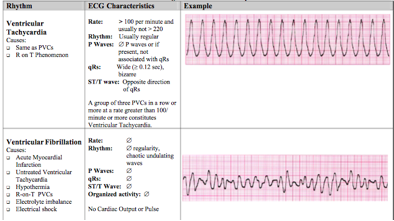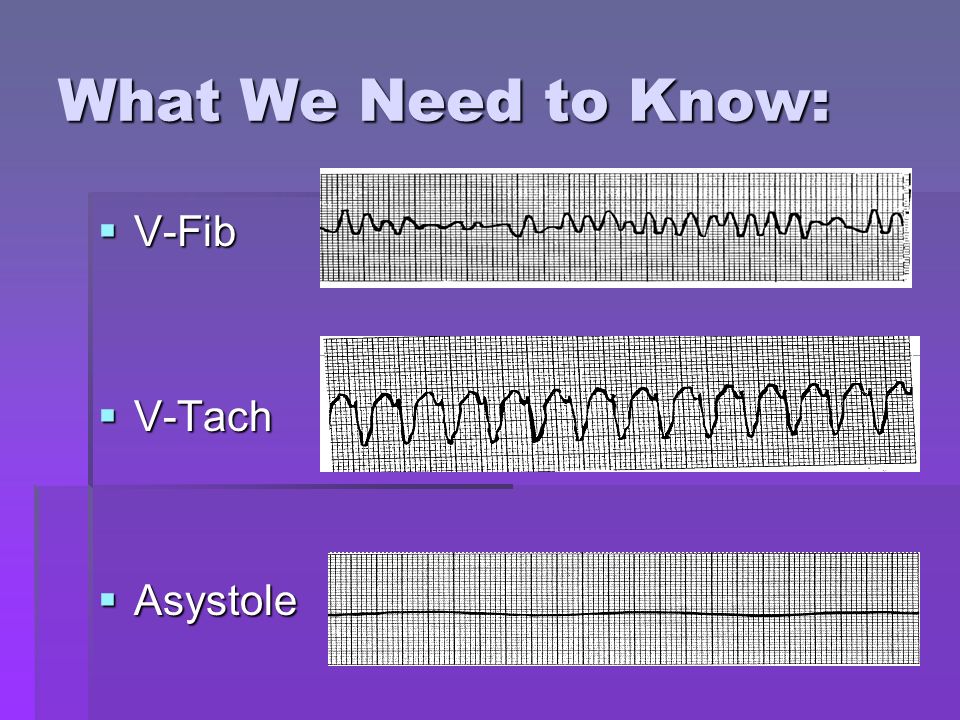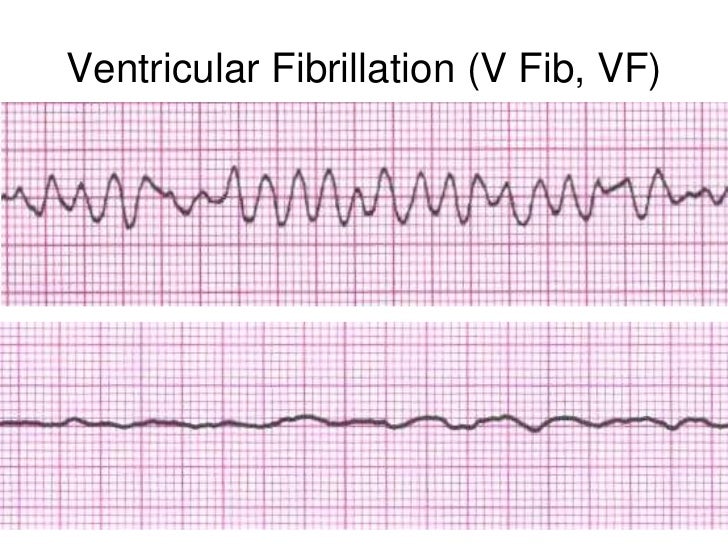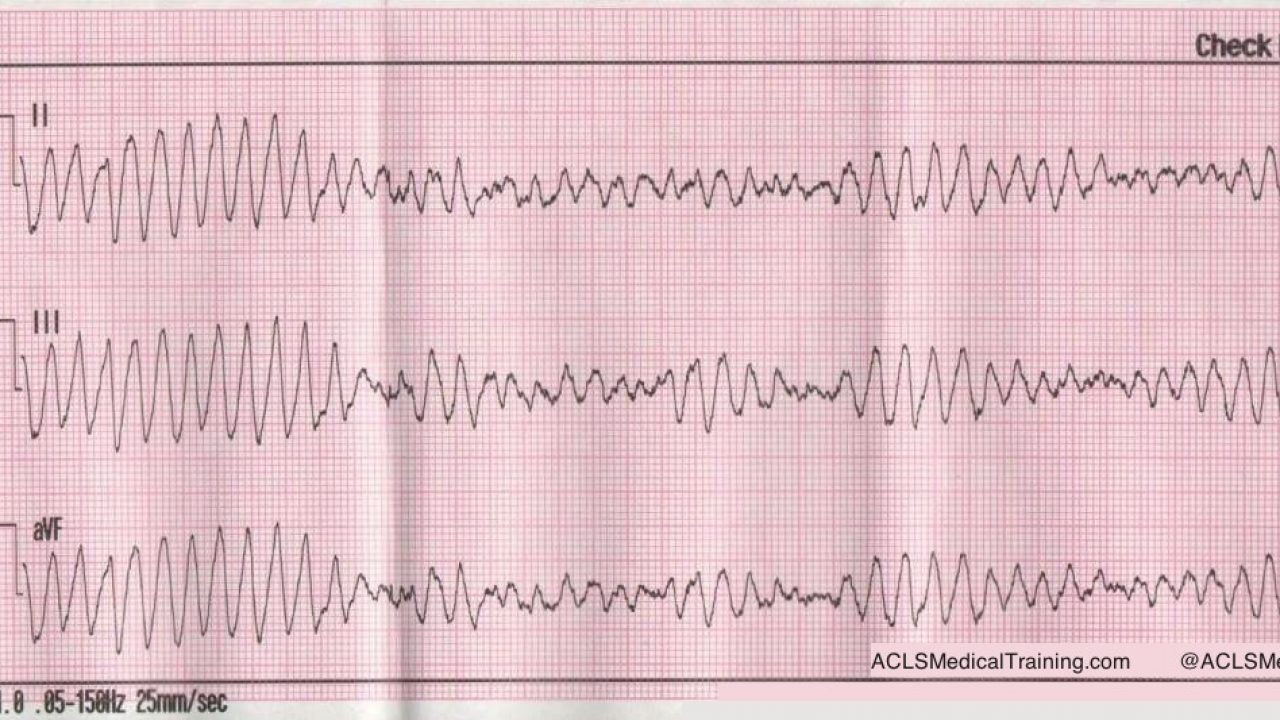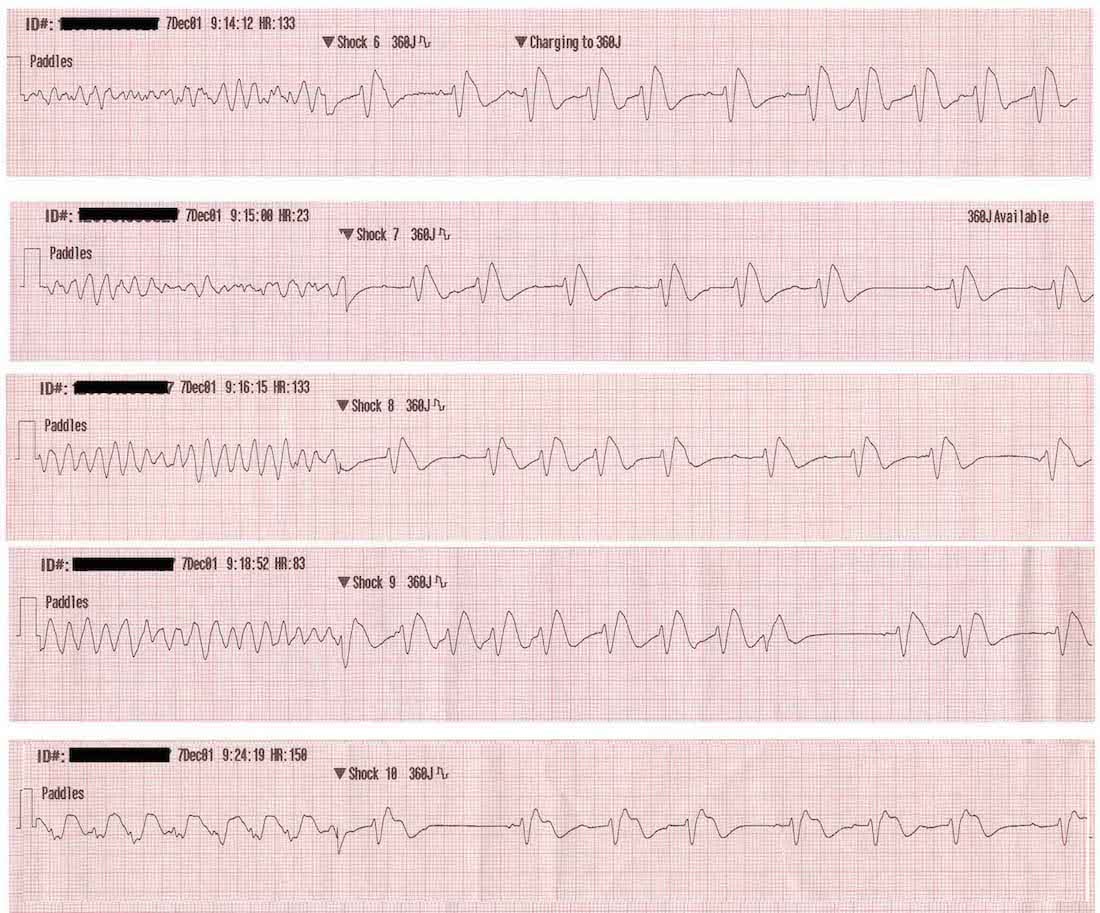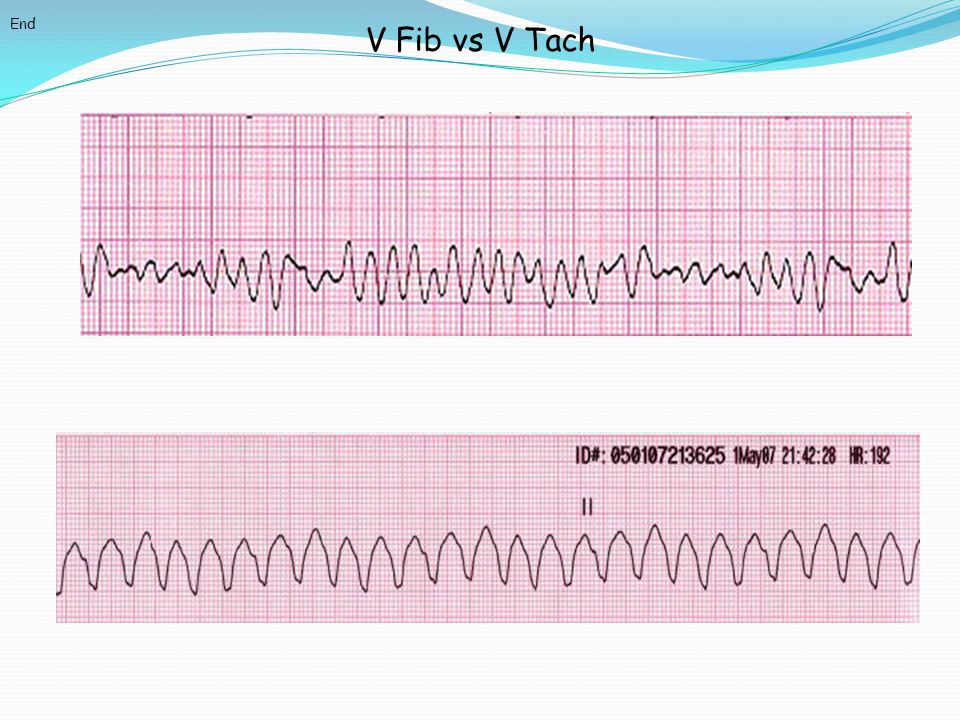V Tach V Fib Rhythm

A dangerous condition related to ventricular tachycardia is ventricular fibrillation v fib.
V tach v fib rhythm. Acls cardiac arrest vtach and vfib algorithm perform the initial assessment perform high quality cpr establish an airway and provide oxygen to keep oxygen saturation 94 monitor the victim s heart rhythm and blood pressure if the patient is in vtach or vfib this is a shockable rhythm apply defibrillator pads or paddles and shock the. This condition may also be called v tach or vt. Ventricular tachycardia vs ventricular fibrillation arrhythmia means irregular cardiac rhythm and slow arrhythmias are called bradyarrhythmias and fast ones are called tachyarrhythmias there are various types of arrhythmias. Difference between ventricular tachycardia and ventricular fibrillation definition.
Atrial fibrillation is caused by irregular electrical impulses in the atria and ventricular fibrillation is caused by irregular electrical impulses in the ventricles. This rhythm usually appears on the monitor as a wide regular and very rapid rhythm. In this condition the heartbeat is so fast and irregular that. Ventricular tachycardia v tach typically responds well to defibrillation.
Symptoms of both afib and vfib are shortness of breath dizziness nausea and chest pain. Ventricular tachycardia may eventually lead to ventricular fibrillation which is characterized by a rapid inadequate heart rhythm. Such a condition arises mostly in people having valvular hear disease. Patients may present with or without a pulse.
They are atrial tachycardia monofocal or multifocal atrial fibrillation atrial flutter atrioventricular nodal re entry tachycardia atrioventricular re entry. Ventricular tachycardia vtach ventricular tachycardia is a medical condition which is associated with the hearts irregular electrical impulses. Atrial fibrillation afib and ventricular fibrillation vfib are both a type of abnormal heart rhythm arrhythmia. Ventricular tachycardia is a heart rhythm disorder arrhythmia caused by abnormal electrical signals in the lower chambers of the heart ventricles.
Sometimes this rhythm may occur as a. A healthy heart normally beats about 60 to 100 times a minute at rest. Disordered electrical activity causes the heart s lower chambers ventricles to quiver or fibrillate instead of contracting or beating normally.








